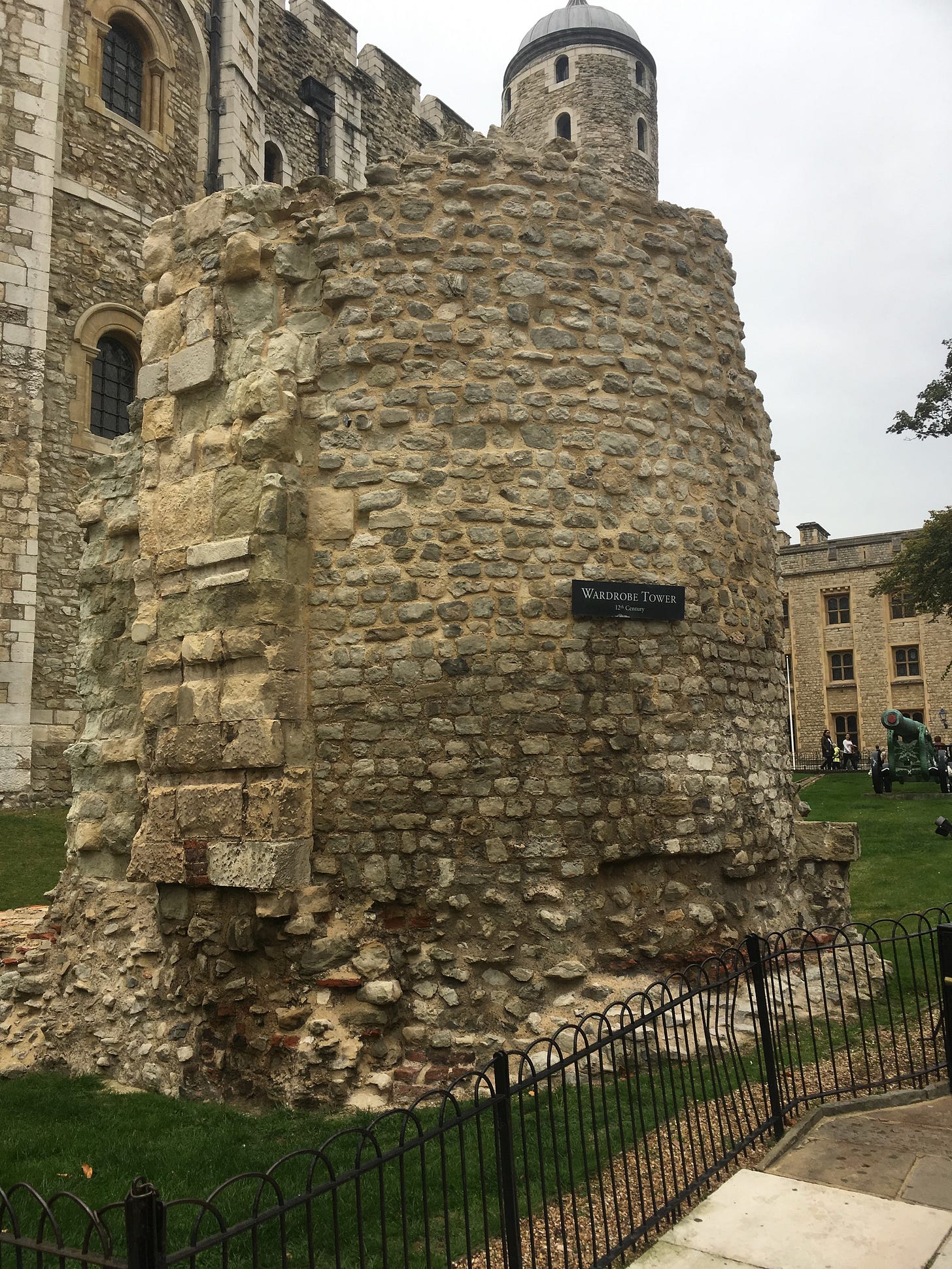Tales from the Tower: The Rise and Fall of Ranulf Flambard
The Norman Prince-Bishop who became the Tower’s first prisoner and escapee
As established in my previous article, the first stone Tower of London appears to have been completed by the reign of Henry I. It is unclear if England’s first three Norman kings ever used the lodgings there. Either way, from the reign of Henry I onwards, evidence suggests that the accommodation facilities were in regular use and not just for the law-abiding. Though Guldulf’s Tower lacked specifically built dungeons, it perhaps comes as little surprise that walls intended to keep enemies out proved equally good at keeping them in.
It is perhaps one of the Tower’s great ironies that its first prisoner was also its first escapee. By the time of his incarceration in 1100, Ranulf Flambard was arguably the most important non-royal in England. The son of a Norman cleric, Flambard followed his father into the Church and helped establish the Domesday Book before becoming one of William Rufus’s most vocal supporters.
When Rufus (pic below) became king, succeeding his father, William the Conqueror, who died in September 1087, Flambard was chaplain to Maurice, Bishop of London, and keeper of the royal seal: more or less lord chancellor. After acquiring a prebend in the diocese of Salisbury, whose new cathedral at Old Sarum was fast becoming a local centre point, he obtained similar titles while developing a dubious reputation for enriching himself with the revenues of deceased canons. By the 1090s, his eye for business saw him made chaplain of Rufus’s court and appointed chief treasurer. He may also have been England’s first justiciar, more or less Prime Minister.
True to his previous form, Flambard needed little excuse to drum up extra business. When charged with raising the fyrd – the English militia – for the king’s battles with his brother Robert Curthose, Duke of Normandy, he regularly pocketed illicit profits by obtaining funds from the warriors’ home villages, as well as levying ‘reliefs’ against the sixteen abbeys and bishoprics under his administration. Though his deeds proved effective, they didn’t go unnoticed. Writing at the time, the local chronicler, William of Malmesbury, lamented, ‘he skinned the rich, ground down the poor, and swept other men’s inheritances into his net.’
In 1099, Flambard secured his most significant promotion to that date, to the See of Durham. Durham was a unique fish in England. Being a ‘county palatine’, Flambard was enthroned as a prince-bishop rather than the usual bishop of a regular diocese. Unsurprisingly, his first year in Durham was blighted by similar accusations of corruption. Echoing the words of Malmesbury, another chronicler decried that ‘justice slept’ and ‘money was the Lord’. On the plus side, Flambard clearly shared Bishop Gundulf’s building talents. Construction of its cathedral, arguably the largest in northern Europe to that date, began on his watch – even today, it is one of the finest in the north of England. In London, the first stone bridge and Westminster Hall – the most prominent secular building in northern Europe – both occurred at his direction. Far more ironically, he also commissioned a curtain wall surrounding the Tower of London.
Flambard had been in Durham less than a year when William II died in 1100, most likely murdered, riding in the New Forest. After mourning the king at Winchester, his well ran dry on the accession of Rufus’s younger brother, Henry I (pic below). Well aware of the bishop’s sinful reputation, the new king stripped Flambard of his offices of state and imprisoned him on charges of embezzlement.
With this, he became the Tower’s first prisoner.
For six months, the disgraced cleric wiled his time away within the walls of Bishop Gundulf’s Tower. Despite being imprisoned, his lodgings were undoubtedly comfortable, per his esteemed position in the Church. Aided by his remaining wealth, he was allowed to maintain his servants, who brought his meals in from the outside world.
Unsurprisingly, the crafty bishop and politician lost little of his charisma and quietly bided his time as he sought liberation. Famed as an entertainer and compere, he frequently hosted banquets for his gaolers, slowly earning their trust. After organizing one such supper on 2 February 1101, for which he ensured either extra quantities of wine or alternative liquids of additional alcoholic volume, he waited for his captors to become inebriated before putting his plan into action. Using a rope smuggled into his cell inside either a ‘gallon of wine’ or a barrel of oysters, he attempted to abseil down the Tower walls. Despite injuring himself after jumping the remaining 20 feet, he limped to the outer wall and scaled it to where his allies had left him a horse. On making it downriver, a ship took him to Normandy and sanctuary with the king’s elder brother, Robert Curthose.
Much debate has occurred concerning how Flambard slipped the net so impressively. Although lax security or the inside knowledge of the constable of the Tower, William de Mandeville, are both plausible, the inferior size of the Tower and the cunning of the man himself undoubtedly contributed. Within a short time of arriving in Normandy, Flambard was busily aiding Curthose in his attempts to invade England. Fortunately for all concerned, the warring brothers signed an awkward truce at Alton, and the king eventually restored Flambard to the See of Durham, which he maintained until he died in 1128.
His final decades show evidence of amended ways, giving generously to his men and those experiencing poverty. Later achievements include completing Durham Cathedral, fortifying the city with a wall around Durham Castle, building Norham Castle and endowing the collegiate church of Christchurch in Hampshire. He also oversaw the translation of St Cuthbert’s relics into its new tomb, which survived until the Dissolution of the Monasteries.
The story of Bishop Ranulf and the early years of the Tower of London features in my book, A Hidden History of the Tower of London - England’s Most Notorious Prisoners, published by Pen&Sword History
Instagram: https://www.instagram.com/officiallyjpd/
(The app formerly known as) Twitter: https://twitter.com/unknown_templar
Facebook: https://www.facebook.com/people/John-Paul-Davis/61554500203836/
Threads: https://www.threads.net/@officiallyjpd
Goodreads: https://www.goodreads.com/author/show/3119270.John_Paul_Davis









avons nous les noms des amis de Flambard à l'époque de son incarcération ?
Merci retour
Eriamel , www.assorhistoire.com, auteur BD Historique les fils de Guillaume.